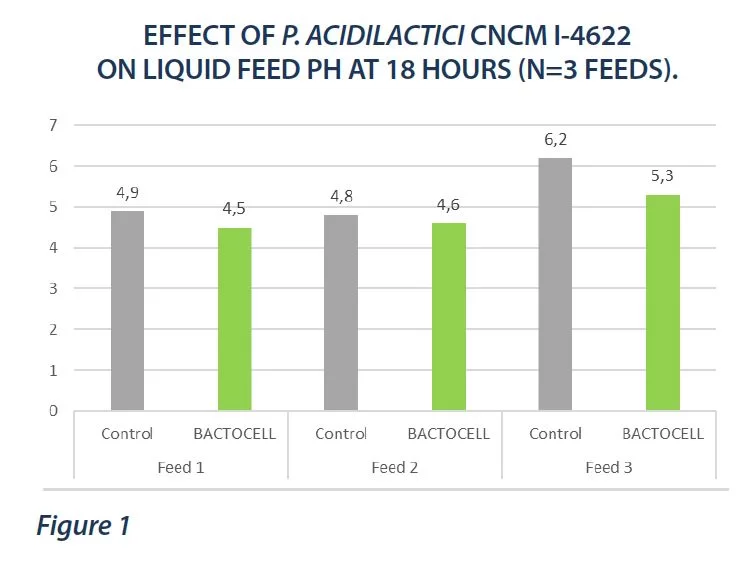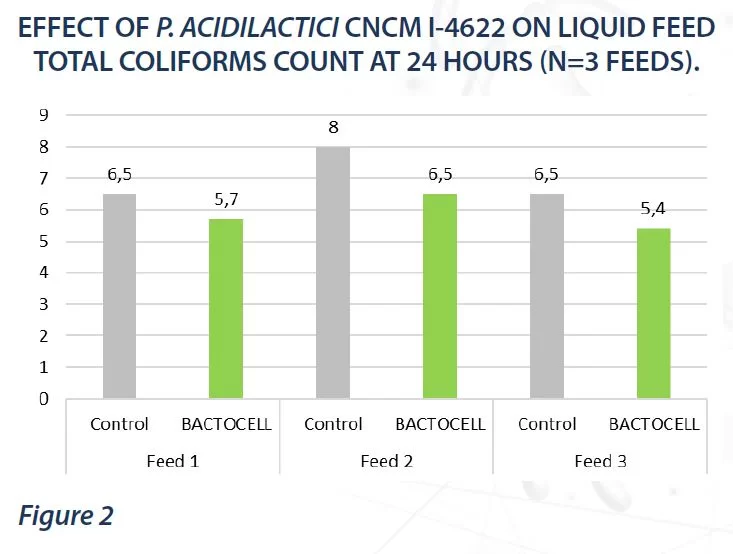How to ensure liquid feed hygiene?
In Europe, liquid feed is particularly popular for swine in northern and western countries — including Denmark, the Netherlands, Ireland, Belgium, France, Germany, Italy and Sweden — where a huge proportion of finishers and sows are fed liquid feed. Liquid feed can be associated with lower costs, improved feed intake, increased palatability and better animal growth. However, liquid feed provides the perfect environment for microorganisms to grow, and the liquid feed system harbours a complex and dynamic microbial ecosystem. Hygiene is key in liquid feed systems to maintain good pig health.
Ensure good quality raw materials
Little is known about the microbiological quality of cereals. The composition of the microbiota present on the cereals helps determine the liquid feed quality and its evolution in time. Depending on the balance between positive and undesired microbes, the nutritional and sanitary qualities of liquid feed can be degraded. Performing regular analysis on raw materials will help decrease the risk of contamination of the liquid feed.
A study conducted in 2017 gathering 66 samples of cereals across Europe demonstrated the ability of the specific microbial inoculant Pediococcus acidilactici CNCM I-4622 (BACTOCELL) to positively affect the microbial profile of different types of cereals when mixed with water.
Adopt proper cleaning procedures
The surface of the tank and pipes are usually coated with biofilms. When biofilms contain pathogenic bacteria, they can be detrimental to liquid feed quality and animal health. Adapted cleaning protocols can help manage biofilms inside the liquid feed system. A complementary strategy consists of using a specific microbial inoculant able to support the establishment of a positive biofilm.
Using a specific microbial inoculant
A recent study, presented at the Pig Research Summit, monitored the acidification and hygiene enhancing properties of Pediococcus acidilactici CNCM I-4622 in pig liquid feed.
After 10 hours incubation at 30°C, the feeds containing P. acidilactici CNCM I-4622 were better and faster acidified than control feed. Feed pH was significantly lower (Figure 1). Similarly, the concentration of L-lactic acid in the feed was significantly higher with the lactic acid bacteria.
 This enhanced lactic acid production ensured better feed hygiene as indicated by the significantly lower total coliform counts (Figure 2).
This enhanced lactic acid production ensured better feed hygiene as indicated by the significantly lower total coliform counts (Figure 2).

Watch the video!
REFERENCES
Jacobs C., Hupé J.F., Pélissié I., Demey V., Saornil D., Bravo de Laguna F., Castex M. 2023 Potential of liquid feed hygienization by Pediococcus acidilactici CNCM I-4622 (MA 18/5M) to improve milk production. Pig Research Summit 2023, Copenhagen, Denmark.
Kontakt:
Skontaktuj się z nami za pomocą poniższego formularza.

